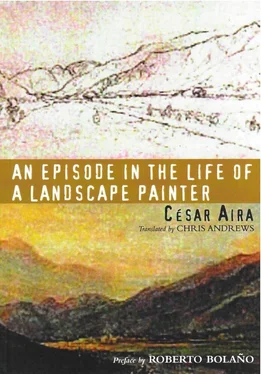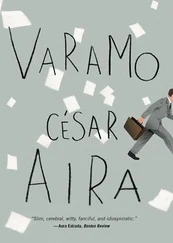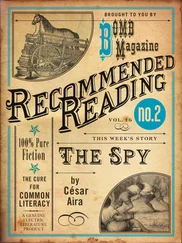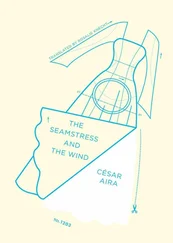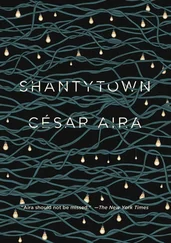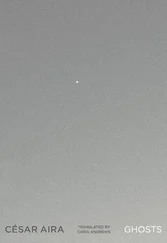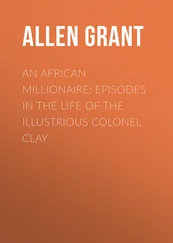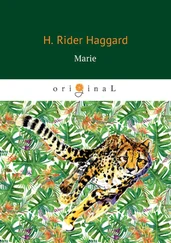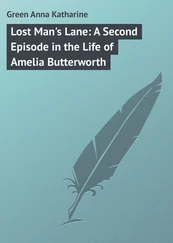Cesar Aira - An Episode in the Life of a Landscape Painter
Здесь есть возможность читать онлайн «Cesar Aira - An Episode in the Life of a Landscape Painter» весь текст электронной книги совершенно бесплатно (целиком полную версию без сокращений). В некоторых случаях можно слушать аудио, скачать через торрент в формате fb2 и присутствует краткое содержание. Год выпуска: 2006, Издательство: New Directions, Жанр: Современная проза, на английском языке. Описание произведения, (предисловие) а так же отзывы посетителей доступны на портале библиотеки ЛибКат.
- Название:An Episode in the Life of a Landscape Painter
- Автор:
- Издательство:New Directions
- Жанр:
- Год:2006
- ISBN:нет данных
- Рейтинг книги:5 / 5. Голосов: 1
-
Избранное:Добавить в избранное
- Отзывы:
-
Ваша оценка:
- 100
- 1
- 2
- 3
- 4
- 5
An Episode in the Life of a Landscape Painter: краткое содержание, описание и аннотация
Предлагаем к чтению аннотацию, описание, краткое содержание или предисловие (зависит от того, что написал сам автор книги «An Episode in the Life of a Landscape Painter»). Если вы не нашли необходимую информацию о книге — напишите в комментариях, мы постараемся отыскать её.
An Episode in the Life of a Landscape Painter
An Episode in the Life of a Landscape Painter — читать онлайн бесплатно полную книгу (весь текст) целиком
Ниже представлен текст книги, разбитый по страницам. Система сохранения места последней прочитанной страницы, позволяет с удобством читать онлайн бесплатно книгу «An Episode in the Life of a Landscape Painter», без необходимости каждый раз заново искать на чём Вы остановились. Поставьте закладку, и сможете в любой момент перейти на страницу, на которой закончили чтение.
Интервал:
Закладка:
They could not let this pass; they had to draw it. And they did, without dismounting, resting the paper on portable drawing boards. When they looked up again, there was no one left. Krause glanced across at his friend's sketch. It was strange and disturbing to see him sketching with his head hidden in that black cocoon. He asked if Rugendas could see properly.
He had never seen better in his life. In the depths of that mantled night the pinpricks of his pupils woke him to the bright days panorama. And powdered poppy extract, a concentrated form of the analgesic, provided sleep enough for ten reawakenings per second.
They put their papers into the saddlebags and spurred the horses on, for this scene had been a mere appetizer. And as they came out of the valley (beginner's luck!) they saw a hundred or so Indians veering off to the north, no doubt heading for one of the undefended ranches in the area. This provided subjects for more sketching; Rugendas filled five sheets before the group disappeared from view. As they were setting off again, they encountered a band of ranchers, whom they were able to inform of the Indians' movements. They could be useful, even while keeping out of the mêlée.
On their own again, they headed southwards at walking pace, exchanging their first impressions. Luckily both of them had good eyesight. It seemed they would have to resign themselves to seeing the Indians in miniature, like lead soldiers. Yet the details were all there, violently impressed on their retinas, magnified on the paper. In fact, if they wanted to, they could draw isolated details. The detail that fascinated them was the brevity of it all, the way organization emerged from chance, the speed of the organization. The procedure of the combat between Indians and white men mirrored that of the painters: it was a matter of exploiting the balance between proximity and distance.
Coming over a rise they saw more action: this time the Indians were beating a hasty retreat up a rocky slope, the horses scrambling like goats, leaving behind dozens of rustled bull calves, while the ranchers fired through the gaps in the herd. The scene was picturesque in the extreme. The stick of charcoal began to fly across the paper. The mountain, lit by perpendicular sunlight, offered the racing figures a fan of escape routes, like a peacock's open tail. The artists had to be careful not to exaggerate in their depiction, for the Indian horsemen in their ascent could easily become so many variations on Pegasus. Yet realism was guaranteed as long as they kept sketching naturally, and in that sense having to draw quickly and work out the perspective as they went was a help.
When the Indians had disappeared, they galloped over to the ranchers to see what they were doing. The shots had taken their toll on the herd. Some of the bull calves had been killed; others were still standing, stunned. The men were arguing about brands, which were all mixed up, and non-existent on some of the recently weaned animals. The Germans were surprised to discover that brands could be objects of dispute; they had always thought of them as signs designed to be read unequivocally. They learnt that troops from the fort were engaged in hand-to-hand combat in the stockyards at El Tambo, two leagues away. Thanking the ranchers for this information, they set off.
But halfway there they had to stop again, for the fourth time, to sketch a scrap at a stream crossing. They were starting to feel that there were Indians everywhere. As is often the case with collectors, the problem was not a lack but an excess of specimens. The devils were obviously using dispersion as an added weapon.
It was like wandering from room to room at a party, from the living room to the dining room, from the bedroom to the library, from the laundry to the balcony, all full of noisy, happy, more or less drunk guests, looking for a place to cuddle or trying to find the host to ask him for more beer. Except that it was a house without doors or windows or walls, made of air and distance and echoes, of colors and landforms.
This stream could have been the bathroom. The Indians wanted to charge but they were retreating; the white men wanted to retreat, but in order to do so they had to charge (in order to scare the enemy more effectively with their bangs). This ambivalence was driving the horses crazy; they plunged into the water, splashed about, or simply stopped to drink, very calmly, while their riders yelled themselves hoarse in simultaneous flight and pursuit. The skirmish had an infinite (or at least algebraic) plasticity, and since Rugendas was observing it at closer range this time, his flying pencil traced details of tense and lax muscles, wet hair clinging to supremely expressive shoulders… Everything sketched in this explosive present was material for future compositions, but although it was all provisional, a constraint came into play. It was as if each volume captured in two dimensions on the paper would have to be joined up with the others, in the calm of the studio, edge to edge, like a puzzle, without leaving any gaps. And that was indeed how it would be, for the magic of drawing turns everything into a volume, even air. Except that for Rugendas the "calm of the studio" was a thing of the past; now there was only torment, drugs and hallucinations.
The savages scattered in all directions, and four or five came climbing up the knoll where the painters had stationed themselves. Krause drew his revolver and fired twice into the air; Rugendas was so absorbed that his only reaction was to write BANG BANG on his sheet of paper. The sight of his head wrapped in black lace must have frightened the Indians, for they veered away immediately and made off across the hillside. The painters went down to the stream, where their horses drank. They had come a long way, and what with one thing and another, the morning was already half gone. They struck up a conversation with the men who had remained by the crossing. They were soldiers from the fort; they had ridden from El Tambo in pursuit of the Indians, and were about to return. They could go all together.
Krause was intrigued by the fact that neither these men nor those they had met earlier seemed in the least taken aback by the mask covering Rugendas's face. Yet their lack of surprise was logical enough, since in such difficult situations, adapting any object to any purpose was the norm. In everyday life there were explanations for everything, and in abnormal circumstances, there were explanations for the explanations.
Apparently there was a regular battle underway at El Tambo; the soldiers wanted to leave immediately. Krause suggested that he and Rugendas rest for an hour or so on the shady banks of the stream; he was worried about his friends state of overexcitement and the effect it might have on his system. But Rugendas would not listen: he had not even begun; there was so much to do, right now! And from his point of view, he was right: he had not begun, and he never would.
Off they went, with the young soldiers, who joked and bragged about their comical exploits. It all seemed fairly innocuous. So this was an Indian raid? This series of tableaux vivants? There was still a possibility that it could live up to the popular image, turning ugly and barbaric. But if not, what did it matter?
They did not reach El Tambo. Halfway there, Rugendas had an attack, a severe one. The soldiers were alarmed by his cries and the way he writhed on the saddle. Krause had to tell them to continue on their way, he would take care of it. There was a little hill close by and as the artists struck out in that direction, Rugendas pulled off his hat and flung it away, punching at his temples. What had really shaken the soldiers was not being able to see the origin of the cries, hidden inside the black mantilla. They could not link them to a subjective expression. Oddly, it was the same for Krause. After hours of riding and drawing together without seeing his friend's face, the cries made him realize that he could no longer reconstruct its appearance.
Читать дальшеИнтервал:
Закладка:
Похожие книги на «An Episode in the Life of a Landscape Painter»
Представляем Вашему вниманию похожие книги на «An Episode in the Life of a Landscape Painter» списком для выбора. Мы отобрали схожую по названию и смыслу литературу в надежде предоставить читателям больше вариантов отыскать новые, интересные, ещё непрочитанные произведения.
Обсуждение, отзывы о книге «An Episode in the Life of a Landscape Painter» и просто собственные мнения читателей. Оставьте ваши комментарии, напишите, что Вы думаете о произведении, его смысле или главных героях. Укажите что конкретно понравилось, а что нет, и почему Вы так считаете.
